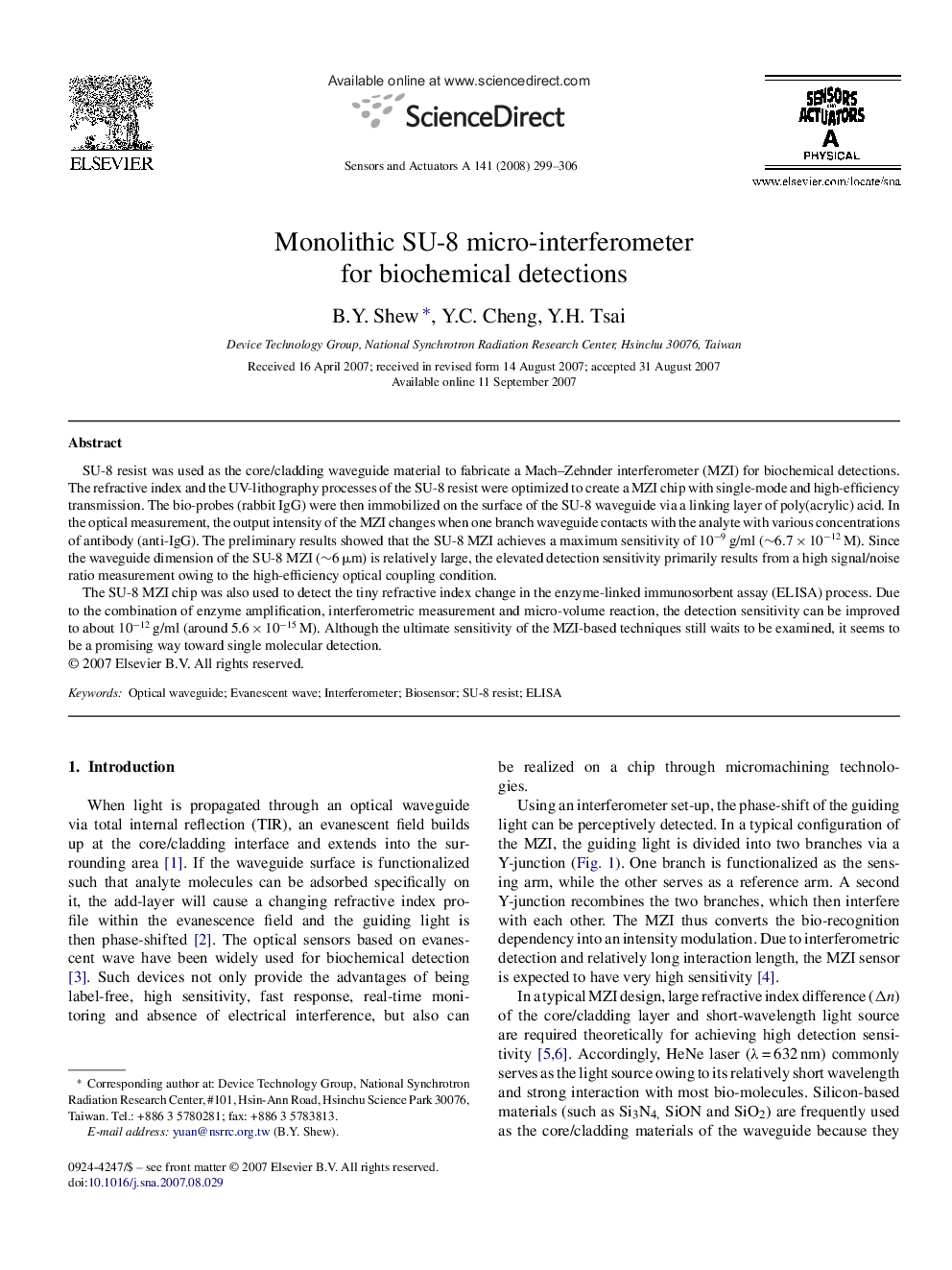| Article ID | Journal | Published Year | Pages | File Type |
|---|---|---|---|---|
| 738827 | Sensors and Actuators A: Physical | 2008 | 8 Pages |
SU-8 resist was used as the core/cladding waveguide material to fabricate a Mach–Zehnder interferometer (MZI) for biochemical detections. The refractive index and the UV-lithography processes of the SU-8 resist were optimized to create a MZI chip with single-mode and high-efficiency transmission. The bio-probes (rabbit IgG) were then immobilized on the surface of the SU-8 waveguide via a linking layer of poly(acrylic) acid. In the optical measurement, the output intensity of the MZI changes when one branch waveguide contacts with the analyte with various concentrations of antibody (anti-IgG). The preliminary results showed that the SU-8 MZI achieves a maximum sensitivity of 10−9 g/ml (∼6.7 × 10−12 M). Since the waveguide dimension of the SU-8 MZI (∼6 μm) is relatively large, the elevated detection sensitivity primarily results from a high signal/noise ratio measurement owing to the high-efficiency optical coupling condition.The SU-8 MZI chip was also used to detect the tiny refractive index change in the enzyme-linked immunosorbent assay (ELISA) process. Due to the combination of enzyme amplification, interferometric measurement and micro-volume reaction, the detection sensitivity can be improved to about 10−12 g/ml (around 5.6 × 10−15 M). Although the ultimate sensitivity of the MZI-based techniques still waits to be examined, it seems to be a promising way toward single molecular detection.
